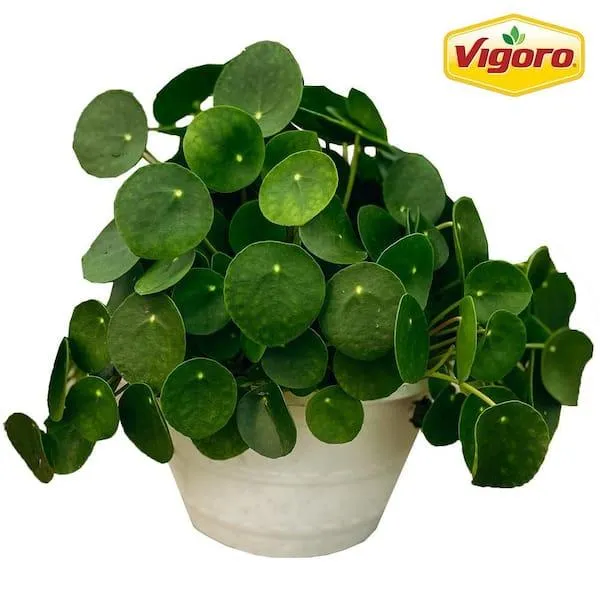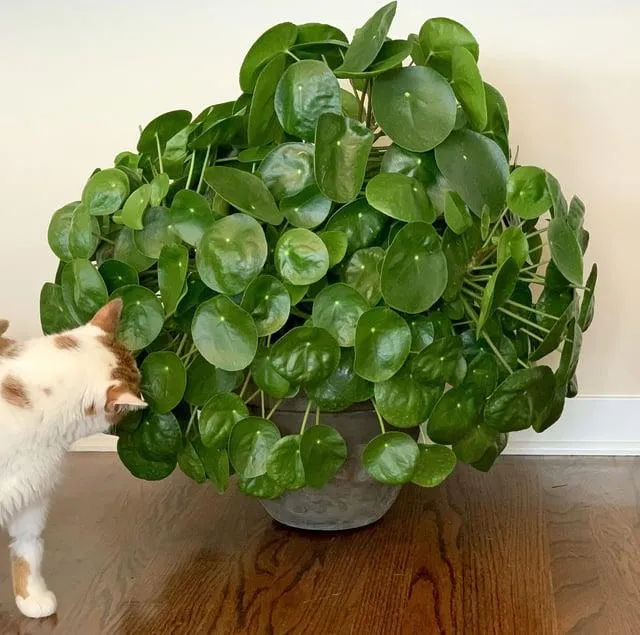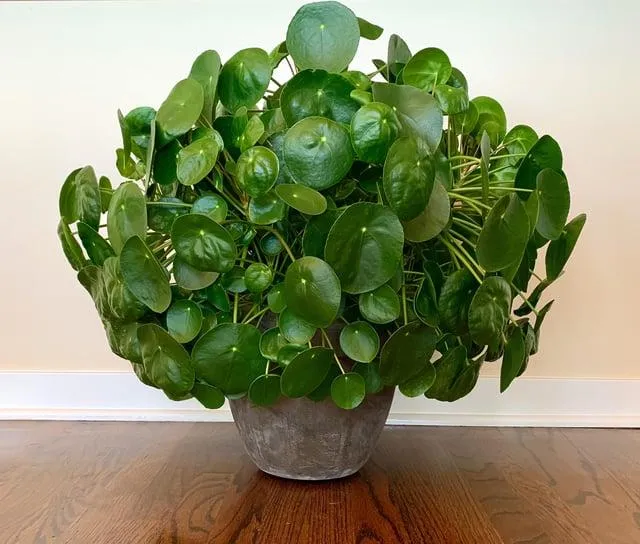Are Pilea Plants Toxic to Cats?
If you have both cats and houseplants in your home, it’s important to know which plants are safe and which should be avoided. One plant that many cat owners wonder about is the popular pilea peperomioides, commonly called the Chinese money plant or pancake plant. In this article, I’ll explore the question of whether pilea plants are toxic to cats and provide answers to help keep your feline family members safe.
What Is Pilea?
Pilea, sometimes called the aluminum plant, is native to China and Southeast Asia. It’s grown as an ornamental houseplant for its attractive round leaves and upright growth habit. Pilea leaves have a shiny, succulent appearance and come in various shades of green. The plant itself remains quite small, typically under 12 inches tall, making it well-suited for tabletops and shelves.
Pilea’s popularity as a houseplant has soared in recent years due to its low light and water needs. It’s considered rather hardy and low-maintenance. From a cat owner’s perspective, an important question is whether pilea poses any health risks to feline companions if ingested.
Is Pilea Toxic to Cats?
The good news is that according to the American Society for the Prevention of Cruelty to Animals (ASPCA) and other veterinary experts, true pilea plants are not considered toxic to cats. While some varieties like the aluminum plant contain calcium oxalates that can cause mild mouth irritation if eaten, they do not appear to cause any serious effects in cats.
From my experience as a veterinary nurse, I have not seen any cases of cats getting sick after ingesting small amounts of pilea leaves or stems. However, cats may experience some gastrointestinal upset such as diarrhea or vomiting if they consumed a large quantity of pilea. The effects would likely be mild and temporary with no lasting harm done.
Other Potential Plant Risks for Cats
While pilea itself is generally safe, there are some other common houseplants cat owners need to be cautious of. Here are a few of the most toxic plants to keep away from curious cats:

- Lilies: All parts of lilies, including popular Easter and Asiatic lilies, are extremely toxic to cats and can cause kidney failure.
- Philodendron: The philodendron plant contains calcium oxalates that cause mouth pain and swelling if eaten.
- Dieffenbachia: Also called dumb cane, this plant contains crystal raphides that can irritate the mouth and throat if ingested.
- Peace lilies: Like philodendron and dieffenbachia, peace lilies contain irritants that can cause drooling, vomiting, and mouth pain in cats.
For cat owners who still want to enjoy houseplants, there are many varieties that offer visual appeal without risk of toxicity, such as snake plant, pothos, spider plant, and Chinese evergreen.
How to Cat-Proof Houseplants
No plant is 100% chew-proof to determined kittens or curious cats. However, there are precautions you can take to discourage plant munching and keep your feline friends safe:
- Move houseplants out of reach on high shelves or tables, especially those known to be toxic.
- Group plants together so there are no isolated targets hanging around at claw-swiping level.
- Consider placing physical barriers like mesh screens around delicate plants.
- Provide your cat with other enrichment toys to chew on rather than leaves.
- Keep an eye out for any signs your cat is nibbling, such as missing leaves or chewed stems, and move the plant right away.
Some cats can’t resist the allure of greenery no matter how hard you try to deter them. In those cases, it may be best to eliminate toxic plant risks from your indoor environment altogether for your cat’s protection.
What to Do If Your Cat Eats a Toxic Plant
Despite your best efforts, accidents happen – and curious cats don’t always stay deterred. If you see your cat eat any part of a potentially toxic houseplant, it’s important to seek veterinary help right away.
Signs your cat needs emergency attention after possible plant ingestion include:
- Drooling, vomiting, or diarrhea
- Disorientation or loss of coordination
- Difficulty breathing
- Collapse or seizures
Don’t try to make your cat vomit at home unless specifically instructed to do so by a veterinarian. And never induce vomiting if the toxic plant was ingested in the last hour.

When calling an emergency vet, be ready to provide details of what plant was eaten, when, and how much. They may ask you to bring a sample of the leaves or plant part with you. Timely treatment, such as decontamination methods or potentially antidotes, is crucial to avoid serious health issues.
Is a Pilea Safe If I Have Cats?
To summarize the key points, while pilea plants are not considered overtly toxic like some other common houseplants, cat owners still need to take precautions. Pilea poses a very low risk of minor gastrointestinal upset if substantial amounts were ingested. However, it’s always better to be safe than sorry where cat and plant safety are concerned.
Unless you can absolutely ensure your pilea will remain completely out of paw’s reach at all times, it’s probably best to choose low-risk pet-friendly plants or locate your pilea where curious kitties can’t access it. With diligent barrier methods and a watchful eye, small pilea plants can potentially co-exist peacefully in a cat household without causing issues.
Most importantly, be informed about which plants pose serious dangers. Don’t take toxic plant risks with your beloved feline friends – their health is too precious. I hope this guide has helped answer your questions about whether pilea plants are safe for cats and what to do if concerns arise.
Please feel free to reach out if you need any other advice keeping your home safely plant-proofed while still enjoying your indoor greenery. Your cat’s well-being is paramount. With care and diligence, happy plant and pet cohabitation is possible.
Is Pilea Cat Safe?
| Pilea Plant Part | Safety for Cats |
|---|---|
| Leaves | Generally non-toxic but can cause mild stomach upset. Monitor pet if ingested. |
| Stems | Non-toxic. |
| Flowers | Non-toxic. |
| Roots | Non-toxic. |
| Potting Soil | Monitor pet if ingesting soil. Could cause intestinal blockage. |
| Cat Attraction | Not especially attractive to cats to chew or play with. May ignore or bat around. |
| Problems if Knocked Over | Non-toxic but spilled soil could cause tracking into home or litter box. Wipe paws and monitor after accidents. |
FAQ
-
Is it safe for my pilea to be around cats?
Generally, pilea plants aren’t poisonous to cats. However, like many houseplants, they can induce vomiting if eaten. So keep an eye on curious kitties so they don’t nibble the leaves.

-
Will cats damage my pilea?
It’s possible for cats to damage pileas if they’re rough with them. Cats might scratch at the soil or even knock the plant over. So put the pilea somewhere up high or behind closed doors if you’ve got an active feline. Otherwise, most cats will leave it alone.
-
What should I do if my cat eats part of the plant?
If Fluffy takes a bite of the pilea, you shouldn’t panic too much. Monitor her and see if she gets sick. Signs to watch for include vomiting, diarrhea, or lack of appetite. In most cases, a small mouthful won’t do much harm. But you may want to call the vet if she eats a lot of the leaves or seems distressed. They can advise you on next steps, just to be safe.
-
Can pilea leaves be toxic to cats long-term?
It appears pileas are generally not a big danger to cats long-term as long as they don’t consume large quantities. However, eating some leaves over months could possibly cause liver or kidney issues in very sensitive kitties. So it’s best to babyproof the area so Fido can’t nibble on leaves nonstop. Overall the risk is low if it’s just an occasional taste.
-
Why are some plants bad for cats but pileas are okay?
Plants contain various compounds that can be poisonous to pets in high amounts. Lilies, for example, contain toxins that can seriously damage a cat’s kidneys. However, experts say the chemicals in pilea seem to pass through a cat’s system without lasting harm, basically as long as they don’t gobble a ton of leaves. Still, it’s always safer to keep plants like lilies away from curious cats.
-
Are there any pilea varieties to avoid with cats?
As far as most gardeners know, all the standard varieties of pilea are generally safe for feline friends. There are hundreds of cultivars available but researchers haven’t found any that are uniquely risky. No need to worry about Chinese money plant, aluminum plant, artillery plant, and so on – even if Whiskers takes a little taste, the pilea probably won’t do much damage.
-
What can I do to discourage cat interest in my pilea?
If Fluffy seems unusually drawn to chewing on this plant, you might try sprinkling some spices like cayenne pepper around the base. Cats usually dislike the strong flavor. You can also look for organic sprays made to stop pets from messing with houseplants. Moving the pilea up high or behind a pet gate may do the trick. With any luck, she’ll decide it’s not worth the effort and leave your plant alone.

